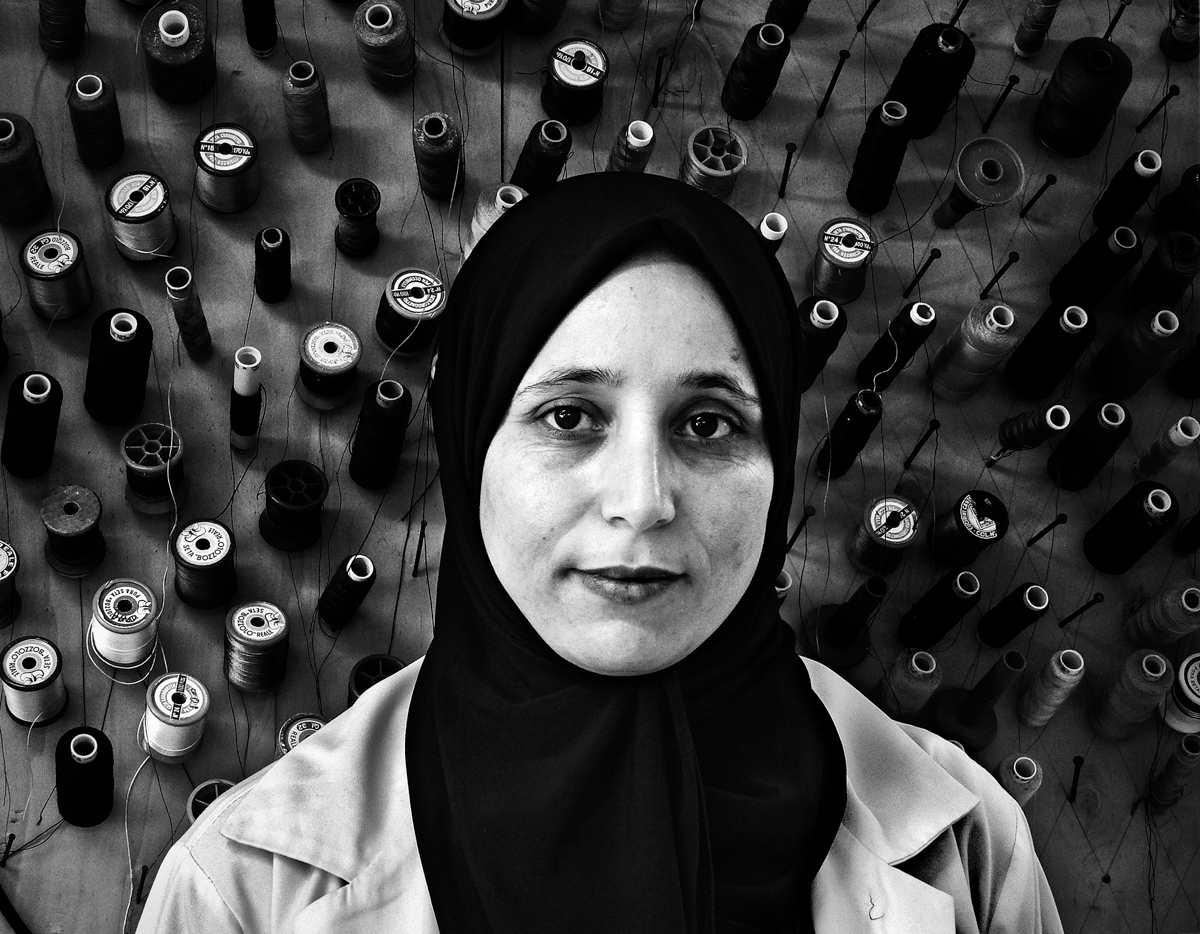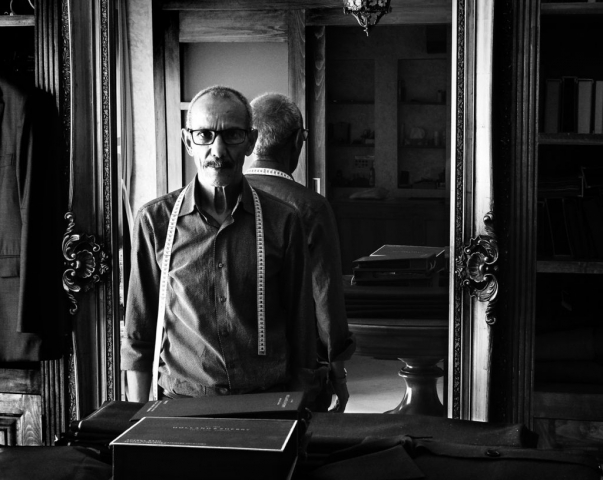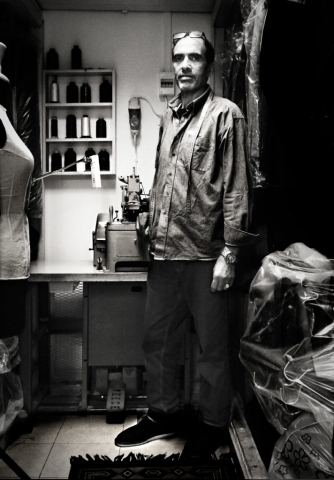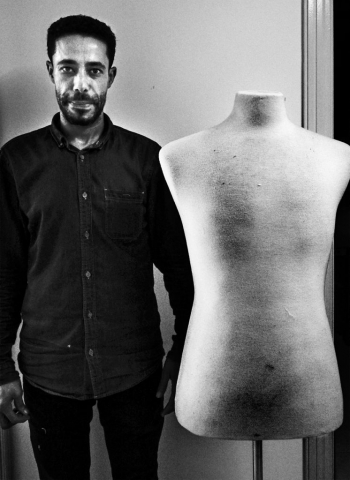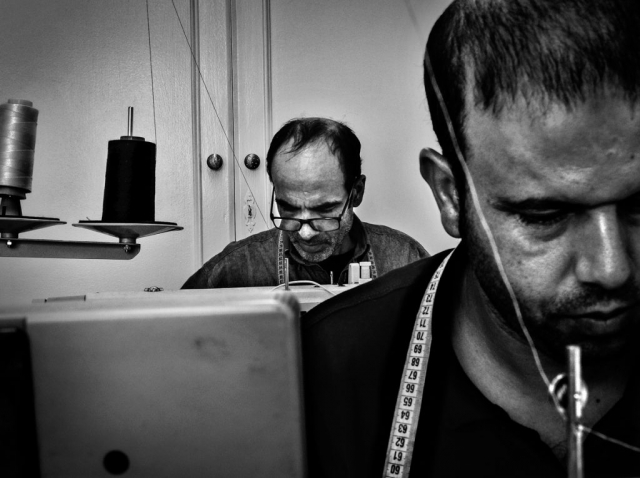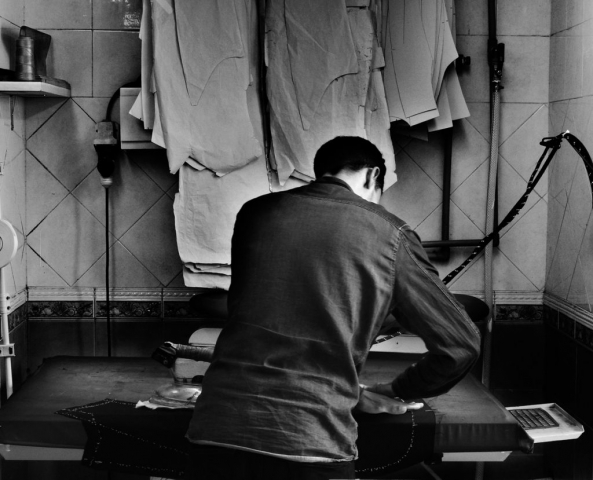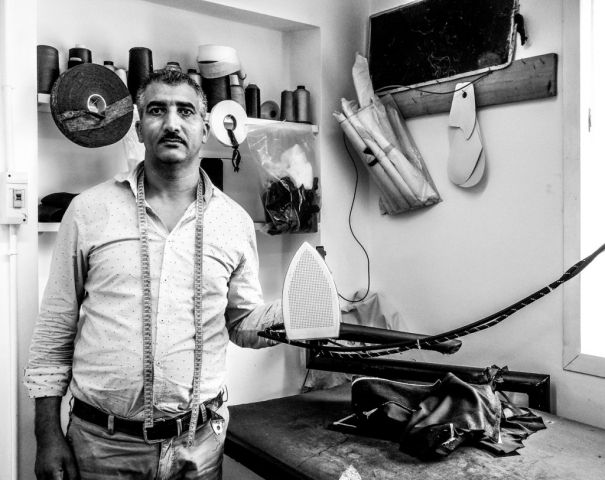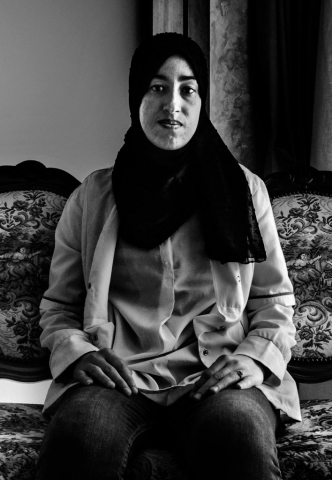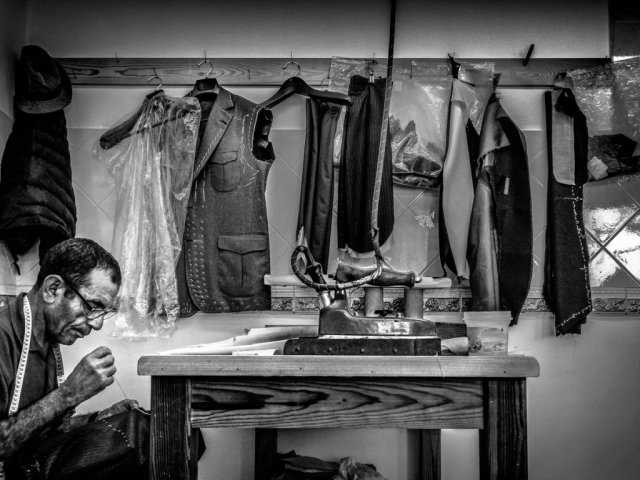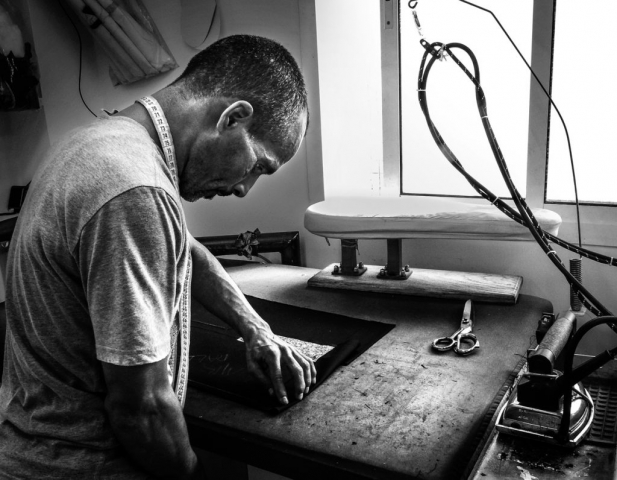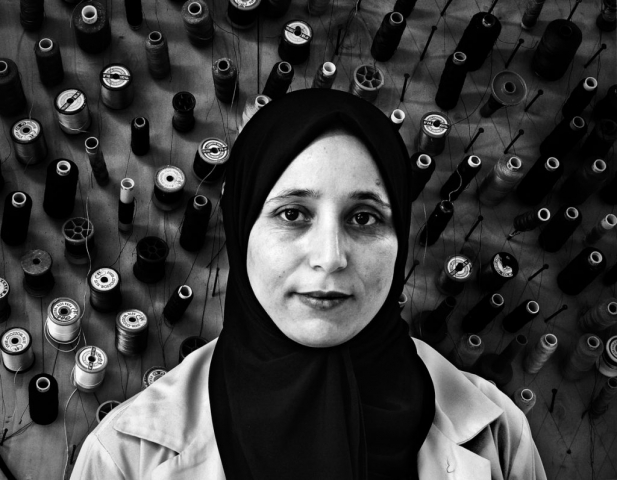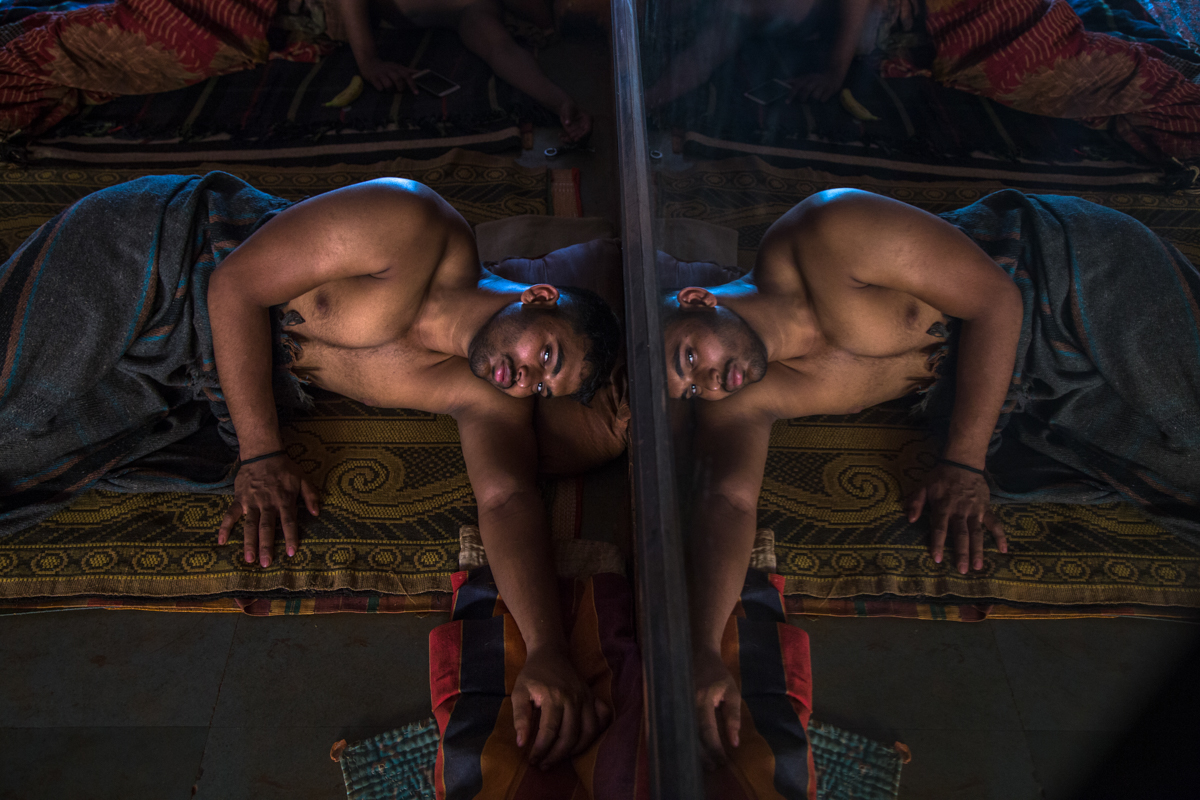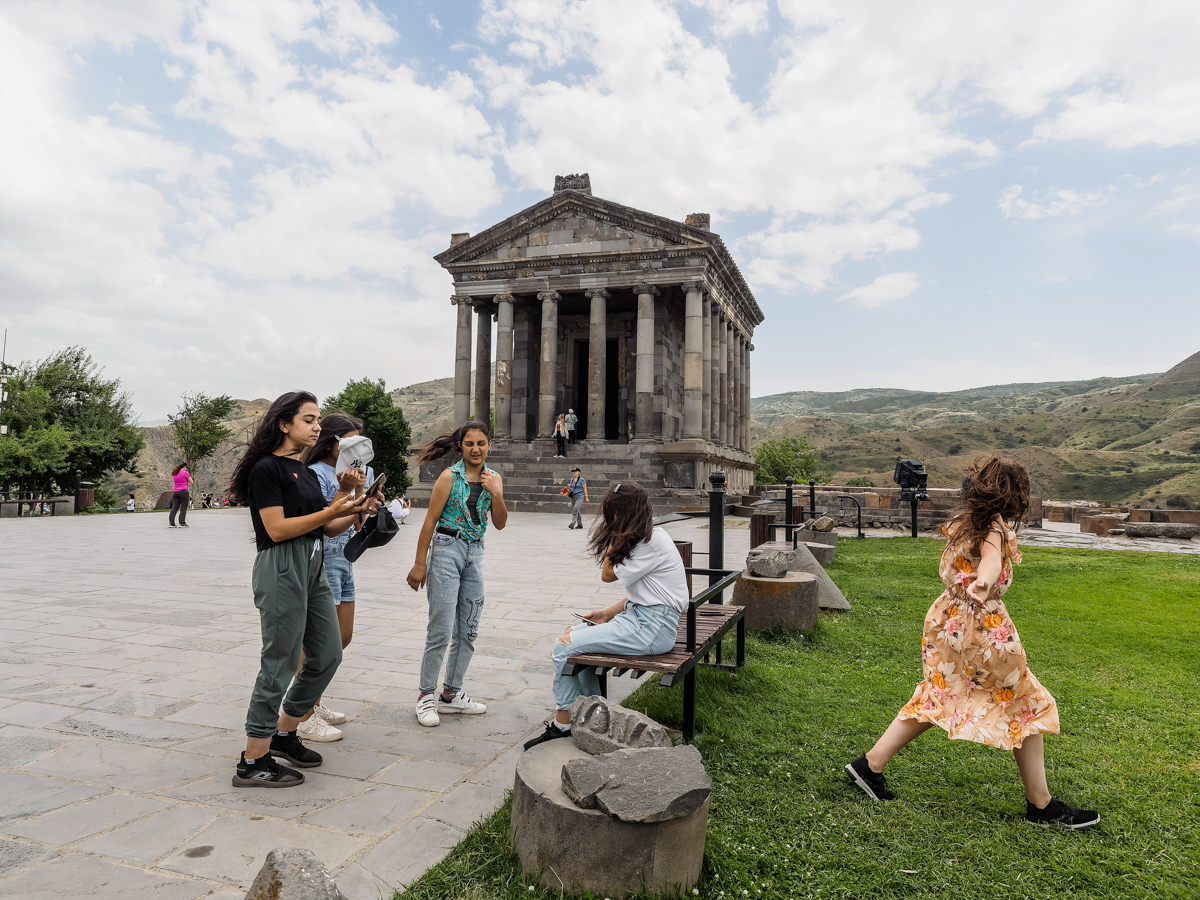Sara Aliscioni – the tailors
The Tailors series was born from my personal photographic research of the trades in the largest city of Morocco, Casablanca. Made immortal by the cult film of the same name, the economic capital is the business destination for excellence.
Using petit taxis as a means of transport, or old red cars driven by private individuals who often did not know the destination and got lost in their unknown roads, I explored the central and suburban districts photographing the various categories of artisans in addition to the most popular markets, in the heart of the non-tourist Medina, where my subjects.
They were butchers and sellers of fabrics, spices and dates.
There were many difficulties in telling the trades. Photographing in Morocco is extremely difficult: the population looks with suspicion not only at the traveler but above all the camera.
This stems from popular beliefs, still strongly rooted, according to which a portrait can steal the soul. Photography, in fact, is seen as a spell, a magic that traps the soul in photo paper.
Artisans and merchants stopped their activities during the hour of Islamic prayer, canonical and obligatory, the ṣalāt, a moment during which I observed their rites in the frame of the city suspended and muffled by litanies aimed at reassuring the faithful.
Looking out the window of the building where one of the exhibitions protagonists of the International Festival of Arts and Migration in the Metaverse, held annually in November, I noticed that, in one of the apartments of the building opposite, there was a tailoring workshop.
Right from the start I was struck by those silhouettes that moved in silence almost to draw the choreography of a silent film in black and white.
I asked one of the collaborators of the Festival if he could help me to meet, get to know and portray the workers of the laboratory. After three days, I finally manage to enter the tailor’s shop opening in front of me a scenario suspended between the dreamlike and the real.
Being tailors, since the past, requires skills and competences as well as patience and passion.
Designing, modifying, repairing, sewing, packaging are just some of the activities that tailors they must be able to do so throughout their working day.
Young apprentices, but also older people, with many years of experience, have around their necks the inseparable meter.
With dedication, patience and repeated gestures, the invisible tailors create clothes for Casablanca’s elite and for the King, a source of pride for each of them.
Faces of women and men have posed inside these frames obtained from the same environments of work characterized by fabrics, scissors, spindles, ironing boards, corsets and sewing machines.
Men, with curiosity but also with skepticism, together with women, with shyness but even with that hidden enthusiasm of those who are chosen as models, they relied on me and the my camera going beyond those beliefs that the Moroccan people do not abandons.
Humans mingle with the silhouettes of mannequins, moving on a stage that it almost belongs to a world that was. In silence and with a harmonious movement, the tailors transform into real artists by creating those works that the upper middle class flaunts with elegance and pride.
They were my protagonists, the chosen subjects to be portrayed to be made immortal.
In fact, the portrait has always played a crucial role in photography which, despite its evolution, has never ceased to be associated with the representation of people.
Walter Benjamin wrote: “Giving up the human figure, for photography, is the most difficult thing of all”.
And this is where the authentic and subjective representation of portraits is born, that of the Tailors.


